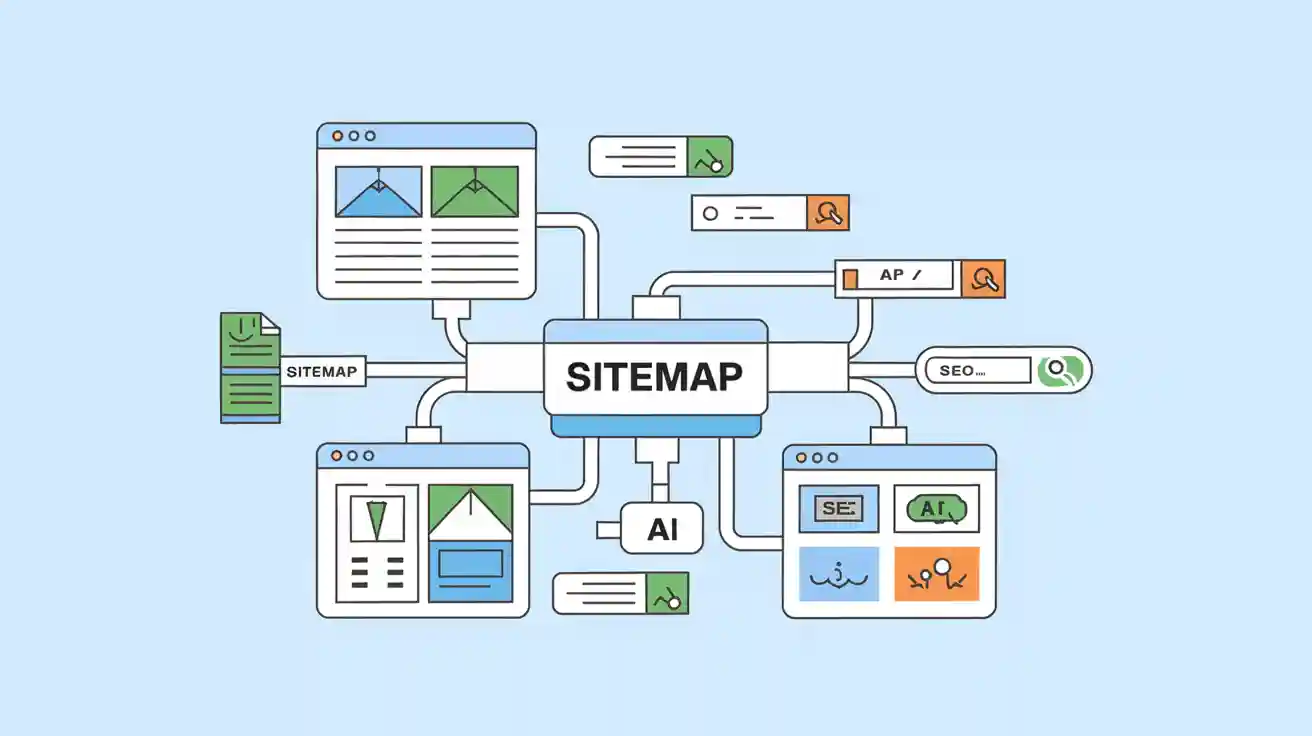What is XML Sitemap? XML Sitemap Definition, Structure & SEO Benefits
Learn what an XML Sitemap is, how it works, and why it’s essential for SEO and AI search optimization. Discover the definition, key components, best practices, and how XML Sitemaps boost website and brand visibility in search engines and AI platforms.


One-Sentence Definition
An XML Sitemap is a structured file in XML format that lists a website’s important URLs, helping search engines and AI platforms efficiently discover, crawl, and index site content.
Detailed Explanation
An XML Sitemap acts as a roadmap for search engines and AI-driven platforms, such as Google, Bing, and large language models (LLMs), by providing a comprehensive list of a website’s key pages and their relationships. This file not only signals which pages are most important but also supplies metadata—like the last modification date—that helps crawlers prioritize fresh or updated content. While well-linked sites may be discoverable without a sitemap, having one is especially valuable for large, frequently updated, or complex websites, and is increasingly relevant as AI search engines leverage sitemaps for content discovery (Google Search Central).
Key Components of an XML Sitemap
XML Version Declaration: Specifies the file type and encoding (usually UTF-8).
Tag: The root element that defines the sitemap protocol standard.
Tag: Parent tag for each page entry.
Tag: The canonical URL of the page.
Tag (optional but recommended): Indicates the last significant update to the page, helping search engines and AI platforms prioritize crawling.
Sitemap Index: For large sites, multiple sitemaps can be grouped using a sitemap index file.
Best Practice: Only include canonical, indexable URLs. Avoid listing redirects, 404s, or pages blocked by robots.txt. Use dynamic generation to keep the sitemap current (sitemaps.org protocol).
Real-World Applications
SEO Optimization: XML Sitemaps accelerate the discovery and indexing of new or updated content, which is crucial for large or frequently changing sites. For example, e-commerce brands with thousands of products use dynamic sitemaps to ensure new listings are quickly indexed.
AI Search Visibility: As AI search engines and LLMs (like ChatGPT or Google AI Overview) increasingly rely on structured data, a well-maintained sitemap can improve a brand’s visibility in AI-generated answers and summaries (Search Engine Journal).
Brand Monitoring and Optimization: Platforms like Geneo monitor sitemap health, analyze lastmod accuracy, and provide actionable recommendations to boost brand visibility in both traditional and AI search results. For instance, a brand using Geneo to optimize its sitemap structure and metadata saw improved inclusion rates in Google AI Overview and faster updates in ChatGPT-powered search tools.
Related Concepts
robots.txt: A file that tells search engines which pages not to crawl, complementing the sitemap’s inclusion function.
HTML Sitemap: A user-facing page listing site links, designed for human navigation rather than search engines.
Schema Markup: Structured data that further enhances how search engines interpret page content.
Sitemap Index: A master file that references multiple sitemaps, essential for large sites.
Explore more: robots.txt, HTML Sitemap, Schema Markup.
Want to monitor and optimize your brand’s AI and search visibility? Try Geneo for real-time sitemap analysis, actionable SEO insights, and AI search optimization.





